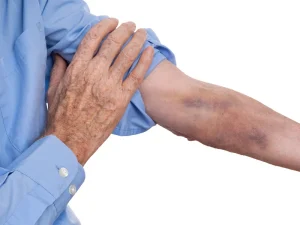
Other than the fact that someone is drinking more than usual, it might be hard to detect that there’s even a problem because outwardly the alcoholic appears normal. Internally, though, significant biological changes are occurring. If you’re on this journey yourself, or supporting someone who is, remember that help is available at every stage.

The Spectrum of Alcohol Intake: From Problem Drinking to Dependence

According to the CDC, more than one million people die yearly of cirrhosis, including over 40,000 people in the United States. There is no greater tool to diagnose an AUD than a visit to an addiction specialist. Yet, screening tools such as the CAGE questionnaire may be useful in further assessing the likelihood of AUDs. A score of 2 or greater on the CAGE questionnaire typically indicates the need for further evaluation and potential diagnosis of AUDs. Alcohol’s impact on the brain is the key to understanding how this disorder progresses over time. The severity of AUD is categorized as mild (2-3 criteria), moderate (4-5 criteria), or severe (6 or more criteria) based on the number of criteria met.
- Other ways to get help include talking with a mental health professional or seeking help from a support group such as Alcoholics Anonymous or a similar type of self-help group.
- To counteract the sedating effects of alcohol, for example, the brain increases the activity of excitatory neurotransmitters, which speed up brain activity.
- AddictionResource aims to present the most accurate, trustworthy, and up-to-date medical content to our readers.
- If willing, a person with an AUD can get stabilized with recovery.
- Often, the person can consume large amounts of alcohol without appearing impaired.
- By recognizing where you or a loved one is in this process, you can tailor interventions, set realistic expectations, and provide appropriate support at each stage.
Physical Effects and Deterioration in End-Stage Alcoholism
Tolerance develops when the same amount of alcohol no longer produces the same effects. Close to 88,000 people in the U.S. die from alcohol-related causes every year. Only smoking, poor diet, and lack of physical activity kill more. About 31% of all driving-related deaths are linked to alcohol. Patience and perseverance are your best friends in this journey.

Severe Alcohol Use Disorder
He has a nursing and business/technology degrees from The Johns Hopkins University. Whether you realize it or not, you may start experiencing medical https://ecosoberhouse.com/ problems due to the excessive drinking. Alcoholism can cause hepatitis, cirrhosis of the liver, recurring respiratory infections, and pancreatitis.
Is It Possible To Recover From End-Stage Alcoholism?
After ongoing heavy use, the body may develop a physical dependence in middle-stage alcoholism, where they’ll experience withdrawal symptoms if they stop drinking. It’s also important to set boundaries and take care of your well-being during this process. In addressing alcoholism, a multifaceted approach to treatment is often the most effective.
- Using alcohol during adolescence (from preteens to mid-20s) may affect brain development, making it more likely that they will be diagnosed with AUD later in life.
- Unfortunately, alcoholism works in stages, with each stage getting progressively worse and more dangerous.
- Some people may feel so “broken” that they almost feel they can no longer experience joy and confidence, or have healthy relationships again.
- Please note, this is only a quote of benefits and/or authorization.
- Yet, screening tools such as the CAGE questionnaire may be useful in further assessing the likelihood of AUDs.
- You can still function well enough, despite your heavy drinking, and you become more and more focused on getting that next drink.
- If you or a loved one struggles with alcohol use and cannot cut back on drinking, there may be a danger of alcoholism.
- To others, the person may not look like they have a problem with alcohol.
It should not be used in place of the advice of your physician or other qualified healthcare providers. The most destructive form of alcoholism is chronic alcoholism, an emotionally, socially and physically devastating disease. Alcoholism stages of alcoholism emerges from alcohol abuse, when there’s a pattern of drinking despite negative consequences. Alcoholism and alcohol abuse are both categorized as alcohol use disorders—affecting people of all ages and stages of life.
Problematic Alcohol Use
This increase is typically gradual and is, therefore, easy to overlook. Alcoholism typically falls into four stages, with each stage getting progressively worse. Chronic, long-term drinking can contribute to malnutrition by replacing foods needed for essential nutrients and by interfering with absorption, storage, or metabolism of the essential nutrients. This can also lead to anemia, when your red blood cell (RBC) count is lower than normal or there’s a problem with the hemoglobin protein inside those cells.

What Is The Most Popular Program For Recovering Alcoholics?
That said, there are four general stages of recovery, as compiled by addiction expert Steven M. Melemis, MD. These stages can help prevent relapse and support people to live healthier, fuller lives. If you think you may have a drinking problem, you’re definitely not alone.
